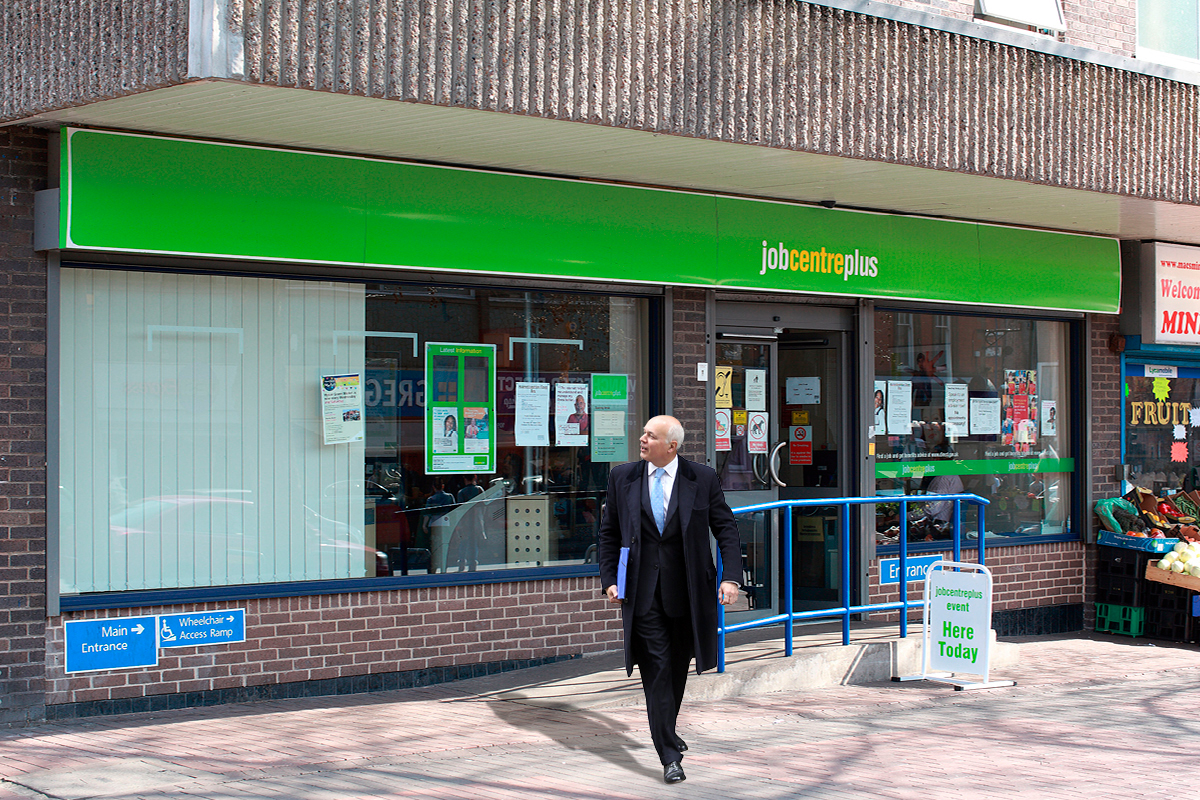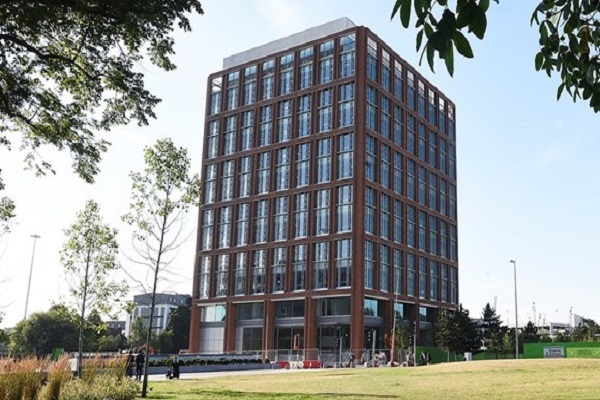You are viewing 1 of your 1 free articles
Harrogate’s great migration: why the leafy district has been chosen to trial Universal Credit
Picturesque Harrogate is the first area chosen to trial migration to Universal Credit. Nathaniel Barker finds out what to expect. Photography by Alamy and Nathaniel Barker
If there was a competition to name the most beautiful district in England, Harrogate would surely stand a good chance of winning.
The spa town, largely wrought of distinctive Yorkshire stone, is often brimming with flowers in bloom. Beyond lie the enchanting gorges of Nidderdale and the postcard-perfect village of Knaresborough, famous for its majestic viaduct.
It is an obvious choice for a relaxing weekend getaway this summer, but less obvious as an area to pilot the next major step in the roll-out of the government’s flagship benefits policy.
Nevertheless, work and pensions secretary Amber Rudd revealed in March that Harrogate would be the first area to trial the managed migration of people claiming benefits to the new Universal Credit System. It means the district’s residents will be the first of three million people set to transition to the six-in-one monthly benefit by the end of 2023.
With this process due to start very soon, Inside Housing made the trip to find out how it will work and how social landlords in the area are preparing.
Harrogate’s selection for the managed migration pilot raises questions: will an area with such a well-to-do reputation really test the impact of the large-scale Universal Credit switchover?Plans for a trial of up to 10,000 people starting this July were made public in October, as ministers struggled under enormous political pressure stemming from growing evidence about the system’s punishing effect on vulnerable people. In this context, some may see Harrogate as an easy option for the Department for Work and Pensions (DWP), chosen partly to help avoid yet more damaging headlines.
Indeed, Harrogate town has all the hallmarks of relative affluence: attractive, well-maintained 19th century buildings on litter-free streets; plenty of tastefully adorned, independent cafes; and a substantial Waitrose.
However, there is more to the district than the flowers in the town centre. Its 505 square miles include the Bilton & Woodfield ward, which ranked in the poorest 10% in the 2015 English indices of deprivation.
Still, according to official job market statistics, the unemployment rate in Harrogate is just 3%, compared with the British average of 4.2%, with 85.1% of people in the town economically active versus 78.5% nationally.
Residents in work earn £603.70 a week on average, comfortably more than the £571.10 taken home in the rest of the country. Just 9.2% of the district’s homes are social housing, while across England the proportion is 17%.
“It was very smart to go with Harrogate for the pilot – it was an easy win,” remarks Graham Stygall, rent manager at 6,000-home local housing association Broadacres. “We’d be in a very different set of circumstances in a city with a lot of unemployment.”
Gareth Roebuck, senior income services manager at regional provider Yorkshire Housing, agrees. “There’s no doubt this would be more testing for everyone if this pilot was happening in an inner city. Had it been in a large city, I think we would have got very different outcomes.”
Then again, the area does pose some challenges. According to the council, housing costs here are the least affordable in the North of England.
Other factors will be at play, too. Mr Roebuck, who works across Yorkshire, praises the “brilliant” local DWP and Jobcentre Plus staff. And Universal Credit first arrived in Harrogate in 2014, while the full service commenced in June 2016.
It has been a pilot area three times for various stages of Universal Credit roll-out, meaning organisations here are among the most experienced at assisting claimants.
For its part, the DWP has been keeping its cards close to its chest: it was unable to answer questions about how the managed migration pilot – or “move to UC”, as the government now calls it – will actually work.
Harrogate’s Job Centre Plus will have a dedicated Universal Credit phoneline to help with the migration
Nevertheless, Inside Housing has managed to gather some details. First, it is understood that the department wants the pilot to commence on 17 July, although that could slip if there is a delay to the parliamentary vote on the regulations, for which there is still no date.
Estimates for how many people in Harrogate could move to Universal Credit vary between about 3,000 and 5,000, although it is widely agreed the area will not hit the 10,000 threshold accounted for in Universal Credit legislation.
In any case, residents will not all wake up one morning and find themselves on Universal Credit – far from it, in fact. The DWP is thought to be planning initially to ask people to switch to the new system voluntarily, with the option offered at work-focused interviews at the job centre. Housing association sources suggested that only around 100 claimants are expected to move over by December – although when this was put to the DWP, it denied having plans to move over a certain number of people by a given date.
“The DWP is thought to be planning initially to ask people to switch to the new system voluntarily, with the option offered at work-focused interviews at the job centre”
It is understood that measures to encourage a gentler transition will be put in place. For instance, there will be a dedicated phoneline at the job centre for those migrating, avoiding the need to call the main Universal Credit helpline. In a change from the regulations, the DWP will not cut off benefits three months after people are told to make a Universal Credit claim. Furthermore, there will be an appeals system for the “transitional protections” – that is, the top-up payments for people whose benefits will be reduced once they move to Universal Credit. This is significant, because calculating entitlement to benefits is often a minefield.
Most people subject to the benefits cap will be included in the pilot, although not the most severely affected, such as those whose entire housing costs would be wiped out by the threshold. Beyond the volunteers, it is unclear how the managed migration will work. Some may wonder, of course, just how many people are likely to sign up – and whether low interest could foreshadow further delays to the roll-out of Universal Credit, which is already six years behind schedule. Others are likely to applaud a cautious approach.
Neither Mr Stygall nor Mr Roebuck are particularly concerned by the pilot. Both their organisations own around 200 homes in Harrogate, but Broadacres has just 28 households still on the older benefits system, while Yorkshire Housing has no more than 40. This is largely down to Universal Credit’s long presence in the area.
Harrogate Housing Association, a 200-home outfit with all its stock in the area, is equally untroubled. “We only have about 30 customers on housing benefit that we know of,” says operations manager Angela Aldis. “There’s nothing about the pilot that would raise an issue that we would need to gear up for.”
Charlotte Fortune, who works with some of the district’s most vulnerable people as hostel service manager at the Harrogate Homeless Project, says: “I actually think it could be positive. In the hostel right now, there are only two people out of 16 still on legacy benefits, so I believe we can support them effectively.” It is also likely that as the first migrators will be volunteers, they will be at the less destitute end of the scale.
The nature of managed migration means this pilot may prove easier to handle than when tenants start claiming Universal Credit through natural migration. “At the moment, we have to react when someone switches on to Universal Credit, but for the managed migration, we know it’s coming so we can plan for it,” explains Mr Stygall. “We know who’s going to be migrated over, so we’re really able to aim those services at those people, to offer them in-depth support.”
The attractive Harrogate Tourist Information building is in the town centre
Broadacres’ package of advice for tenants about benefits will remain the same, but this time it can offer it ahead of the game.
“It’s something we can learn lessons from [to] get our process right,” Mr Roebuck says of the pilot.
“We are doing our tenant profiling now, looking at financial stress, levels of affluence and employment status, to try to identify who will need our help the most,” he says. “If our tenants want support, we have the benefit advice team. The initial assessment is telephone-based. In 10 minutes, we understand whether they need more intensive work or more basic money management and advice on what benefits they are entitled to.”
He says his biggest concern is people currently paid several different benefits and so receiving sums week by week. They may have difficulties coping with a monthly budget under Universal Credit, so Yorkshire Housing plans to get to them before any issues arise.
Mr Stygall remarks that if the pilot was in Hambleton, where Broadacres owns 2,000 homes, “I would be a lot more concerned about the workload.”
Similarly, Mr Roebuck observes that a managed migration pilot “would have a massive impact” on Yorkshire Housing in areas where its stock is more concentrated, such as Sheffield, Bradford or Ryedale.
In numbers: Harrogate’s Universal Credit trial
Harrogate has less economic deprivation and lower unemployment than many British urban areas (picture: Getty)
£603.70
Amount residents in Harrogate in work earn a week on average, compared to £571.10 in the rest of the country
9.2%
Percentage of Harrogate homes that are social housing (the figure across England is 17%)
3%
Unemployment rate in Harrogate, lower than the British average of 4.2%
Source: government statistics
Harrogate Borough Council has the largest stock in the district, with around 3,500 homes. But officials are confident that their experience working through previous pilots stands them in good stead. Mike Chambers, cabinet member for housing and safer communities, says: “This is the third time the Harrogate district has been chosen as a pilot location and is testament to the hard work by Harrogate Jobcentre Plus and the borough council to support claimants.
“Although this is a DWP-led project, we know it can only work successfully if we continue to have a strong working relationship with them and other stakeholders involved. Our focus now is on ensuring our officers are fully knowledgeable of the scheme and the planned roll-out by DWP, and our claimants are well informed and supported throughout the process.”
Despite their optimism about the Harrogate pilot, Mr Stygall and Mr Roebuck both express concern about the wider managed migration because of the sheer volume of resources required.
“We’re having to expand our team because the amount of work in getting the customer to where they need to be over the next couple of years is phenomenal,” says Mr Stygall. “There’s more we’d like to do but we just can’t do it all. This pilot will create a fair bit of work and will take up a good few months. As the other areas migrate over, we will carefully monitor the workload.”
Whatever the outcome of the Harrogate pilot, there will be tricky times ahead. The real test for the managed migration will come when more vulnerable people are shifted across and current evidence suggests that could still be some way off. Getting to the 10,000 people targeted in the pilot, let alone the three million in the long term, may yet prove a challenge.
Future of Work Festival
New for 2019, Inside Housing’s Future of Work Festival will bring together HR and organisational development professionals from the housing sector to discuss and explore the challenges of how to successfully evolve towards the working environment of the future.
Seize this opportunity to rethink your workforces and workplaces by reconsidering the roles of individuals, organisations, automation technology and how society will approach work.
Assess and benchmark your business strategy with the leaders in the housing sector:
- Defining the Future of Work: what does it look like, what will be the implications, how do you rethink your workforce strategy?
- How to embed Electronic Data Interchange into your workforce, attract the widest pool of talent, be authentic and innovative, keep your workforce happy and productive, and position your brand
- Identifying, assessing and closing the skill gaps: what skills will be required in the future and how do you prepare for the undefined?
- Appealing to and maintaining a multi-generational workforce: how to address differing career aspirations, expectations, behaviours and values
- How best to implement the best tech, for example, big data, artificial intelligence, automation, blockchain and the Internet of Things. How will this change workplace skills and wages? How do you evolve towards a ‘STEMpathetic’ workforce?
- Providing your HR and OD department with the right skills and toolkits to revise talent, organisational structures and business models. Be social and environmentally friendly, and data driven – investing in disruptive tech, skills training and ethical use of tech
- Promoting well-being and employee experience
- Introducing training and learning as part of the career path
- Embracing agile working – understanding how flexible and alternative working arrangements can boost productivity
The festival will take place on 17 September, at Westminster Bridge, County Hall in London.
















